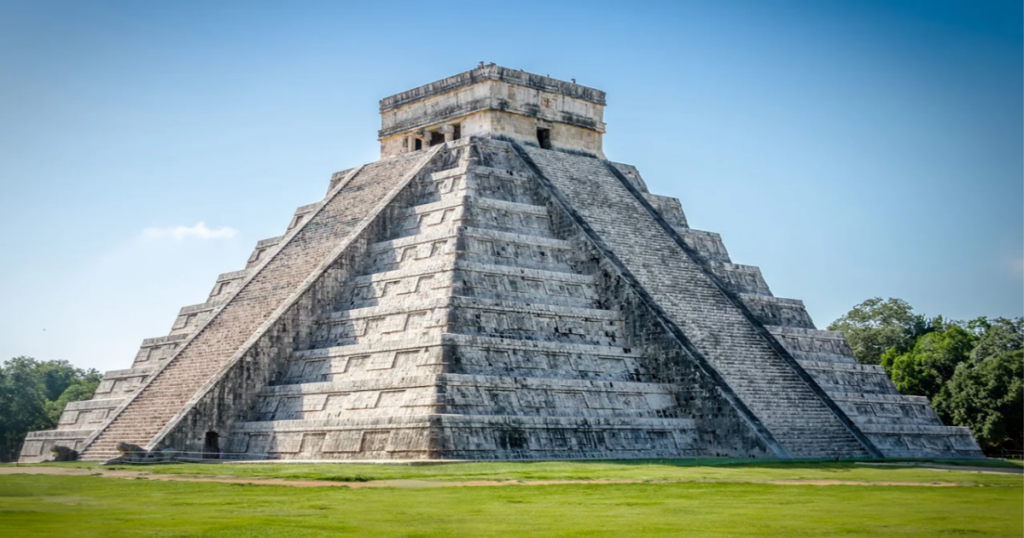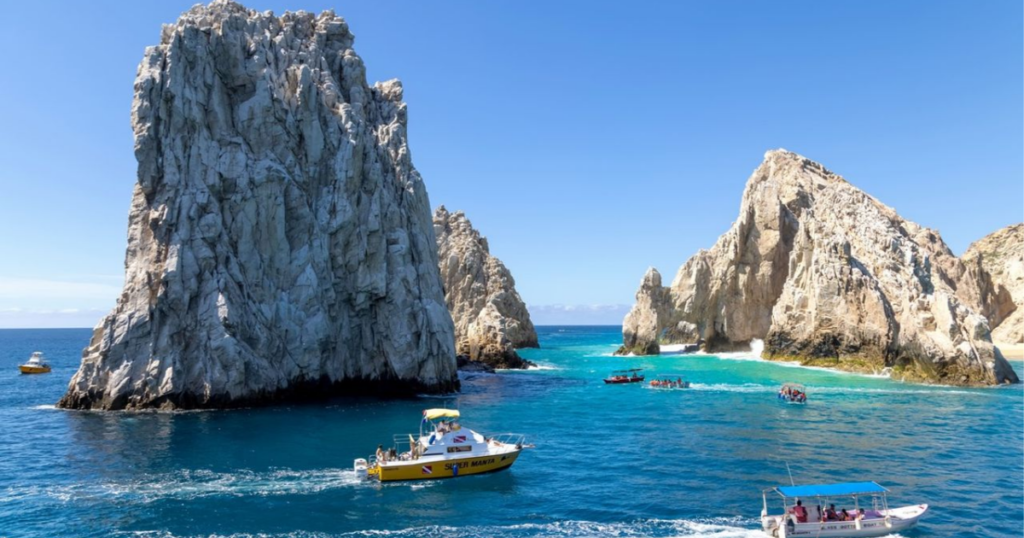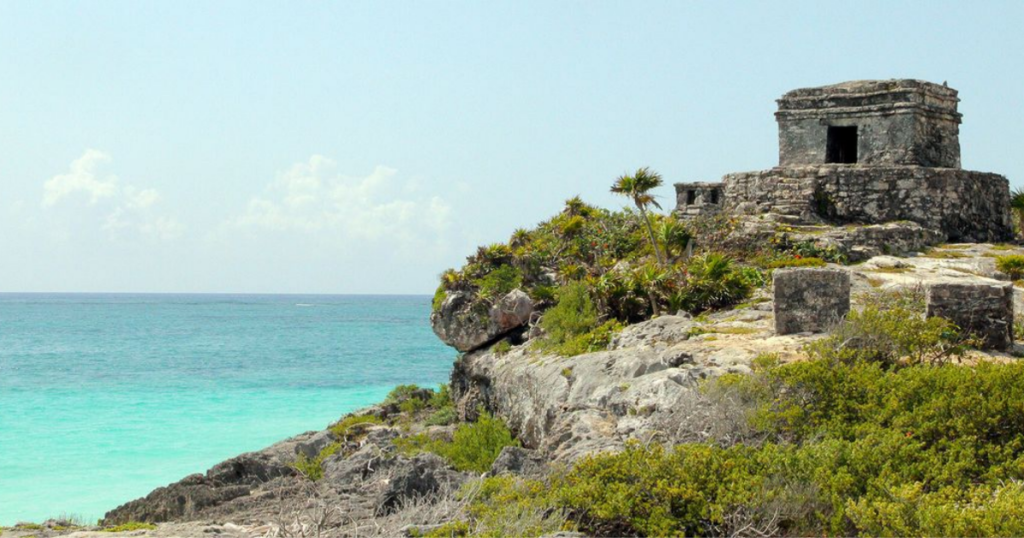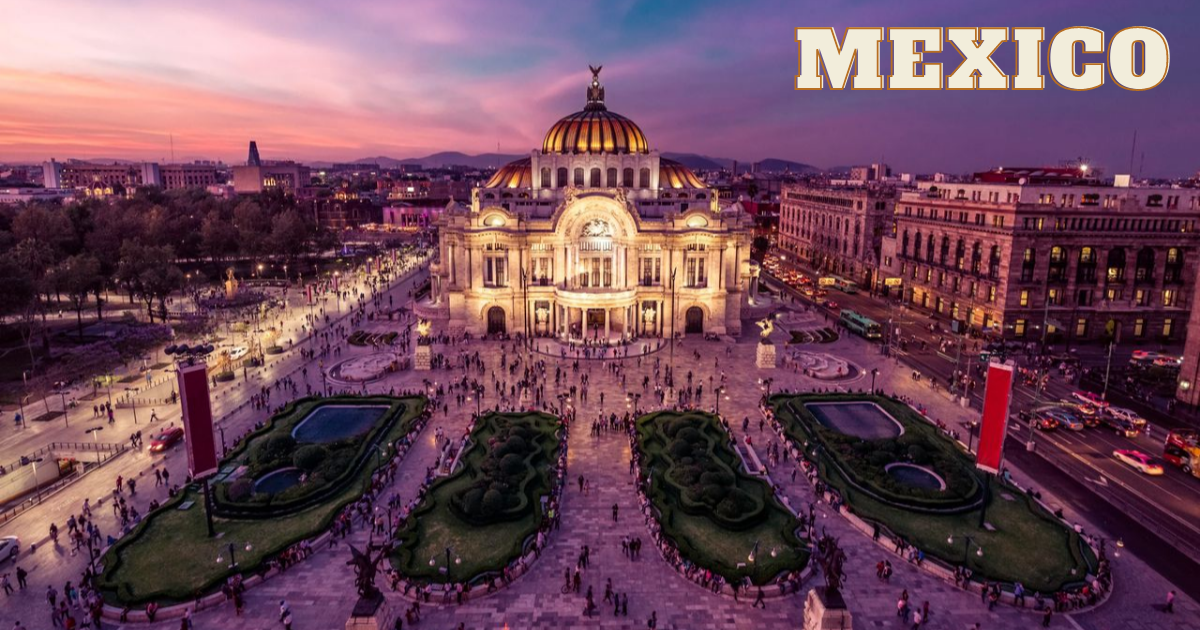Exploring the Charms of Mexico: From Ancient Ruins to Modern Delights
Mexico, located in the southern part of North America, is a country known for its rich cultural heritage, stunning natural beauty, and vibrant cuisine. From the ancient Mayan ruins to the bustling streets of Mexico City, Mexico is a land of contrasts that is sure to captivate and inspire visitors. Whether you’re interested in history, art, music, or simply soaking up the sun on one of its many beautiful beaches, Mexico has something to offer everyone. So come along on a journey to this colorful country and discover all that Mexico has to offer.
Also Read 15 Landmarks To Visit Before You Turn 65

Mexico’s Rich History
Mexico’s history is rich and complex, spanning thousands of years of human civilization. The region that is now Mexico was first inhabited by various indigenous groups, including the Olmecs, Maya, and Aztecs, who built advanced societies with complex cultures, religions, and political systems.
The Aztecs, in particular, built a powerful empire in central Mexico, with their capital city of Tenochtitlan becoming one of the largest and most sophisticated cities in the world at the time. However, their rule was disrupted when Spanish conquistadors, led by Hernan Cortes, arrived in 1519 and waged a brutal campaign to subjugate the Aztecs and claim their land and resources. After years of fighting, the Spanish eventually succeeded in overthrowing the Aztec empire and establishing a colonial regime that would last for the next three centuries.
During the colonial period, Mexico’s indigenous population was subjugated and forced to labor under harsh conditions, while the Spanish built a society that was based on strict class distinctions and racial hierarchy. However, the seeds of Mexican independence were sown during this period, with various rebellions and uprisings challenging Spanish rule and calling for greater autonomy and self-determination.
In 1810, the Mexican War of Independence began, led by figures such as Miguel Hidalgo and Jose Maria Morelos. After a decade of fighting, Mexico finally achieved its independence from Spain in 1821, and a new era of Mexican history began.
However, the new nation faced significant challenges in establishing stability and democracy. A series of internal conflicts, including the Mexican-American War and the French Intervention, further destabilized the country and led to the loss of significant territories to the United States and France.
Throughout the 20th century, Mexico experienced periods of political upheaval, including the Mexican Revolution of 1910-1920, which saw a wide range of social and political movements fighting for power and influence. The country also experienced significant economic growth, particularly during the post-World War II period, as it became a key player in global trade and manufacturing.
Today, Mexico is a vibrant and diverse nation, with a rich cultural heritage and a complex history that continues to shape its society and politics. Despite ongoing challenges, including corruption, violence, and economic inequality, Mexico remains a resilient and dynamic nation with a bright future.
Table of Contents

Follow us on Youtube
Follow us on Facebook
Follow us on Twitter
Follow us on Instagram
Culture and Tradition Of Mexico
Mexico is a country with a rich and diverse cultural heritage, shaped by its long history of indigenous civilizations, European colonialism, and ongoing social and political movements. Mexican culture is characterized by its vibrant and colorful art, music, food, and festivals, which reflect a unique blend of indigenous, Spanish, and other global influences.
One of the most significant aspects of Mexican culture is its indigenous heritage, which includes a wide range of indigenous languages, traditions, and beliefs. Many indigenous cultures in Mexico, such as the Zapotec, Mixtec, and Nahua, have preserved their unique languages, music, and art forms, which often incorporate elements of nature, mythology, and spirituality.
Mexican cuisine is also an essential part of the country’s cultural identity, with a rich and diverse array of dishes that vary from region to region. Traditional Mexican cuisine often features staples such as corn, beans, and chilies, which are used in a variety of dishes such as tacos, tamales, and mole sauce. Mexican food is also famous for its rich and complex flavors, which are achieved through the use of a wide range of herbs, spices, and sauces.
Mexican music is another significant aspect of the country’s cultural heritage, with a wide range of genres and styles that reflect its diverse history and influences. Mariachi music, for example, is a traditional style of music that features a blend of Spanish, indigenous, and African rhythms and instruments, while salsa, cumbia, and other Latin American styles are also popular in Mexico.
Mexico is also known for its vibrant and colorful festivals, which celebrate a wide range of cultural and religious traditions. The Day of the Dead, for example, is a famous Mexican holiday that honors deceased loved ones with colorful altars, music, and food. Other festivals, such as Cinco de Mayo and Independence Day, celebrate Mexico’s history and national identity.
Overall, Mexican culture is a rich and diverse tapestry of traditions, beliefs, and practices that reflect the country’s long and complex history. Whether through art, music, food, or festivals, Mexican culture remains a vibrant and essential part of the country’s identity and heritage.

Also Read 15 Landmarks To Visit Before You Turn 65
Top Places and Landmarks to Be Visited In Mexico
Mexico is a country with a rich and diverse culture and history, with many beautiful and significant landmarks that are worth visiting. Here are some of the top places and landmarks to visit in Mexico:
1) Chichen Itza: Located in the Yucatan Peninsula, Chichen Itza is a UNESCO World Heritage Site and one of the most impressive Mayan ruins in Mexico. The site features the famous El Castillo pyramid, the Temple of the Warriors, and the Great Ball Court.
2) Teotihuacan: Located near Mexico City, Teotihuacan is another UNESCO World Heritage Site and one of the most significant pre-Columbian Mesoamerican sites in Mexico. The site features the impressive Pyramid of the Sun and the Pyramid of the Moon, as well as several other temples and palaces.
3) Palenque: Located in the southern state of Chiapas, Palenque is another important Mayan archaeological site that features well-preserved temples, pyramids, and other structures. The site is located in the midst of a lush jungle, adding to its natural beauty.
4) Tulum: Located in the Riviera Maya on the Caribbean coast, Tulum is a beautiful coastal town known for its white sand beaches and well-preserved Mayan ruins. The site features a castle-like structure overlooking the sea, as well as a range of other temples and buildings.
5) Mexico City’s Historic Center: The historic center of Mexico City is a UNESCO World Heritage Site that features some of the city’s most significant landmarks, including the Palacio de Bellas Artes, the National Palace, and the Templo Mayor archaeological site.
6) Guanajuato: Located in central Mexico, the city of Guanajuato is known for its colorful colonial architecture, charming streets, and historic landmarks such as the Juarez Theater and the Basilica of Our Lady of Guanajuato.
7) Sumidero Canyon: Located in the southern state of Chiapas, Sumidero Canyon is a stunning natural landmark that features sheer cliffs rising over 1,000 meters high, as well as waterfalls, caves, and a range of wildlife.
8) Oaxaca: The city of Oaxaca is known for its rich cultural heritage, with a range of museums, art galleries, and historic landmarks such as the Santo Domingo Church and the Mitla Archaeological Site.
These are just a few of the many places and landmarks that make Mexico such a fascinating and beautiful destination to visit.
Follow us on Youtube
Follow us on Facebook
Follow us on Twitter
Follow us on Instagram
Overall, Mexico’s complex and diverse identity reflects the many layers of its history and culture, from its indigenous roots to its global influences, and continues to evolve in response to ongoing social and political changes. Despite its challenges, Mexico remains a country full of beauty, vitality, and cultural richness that is well worth exploring and experiencing
Do let us know what you think about this particular article on Mexico, also let us know whether there is something we could have added or missed out.

